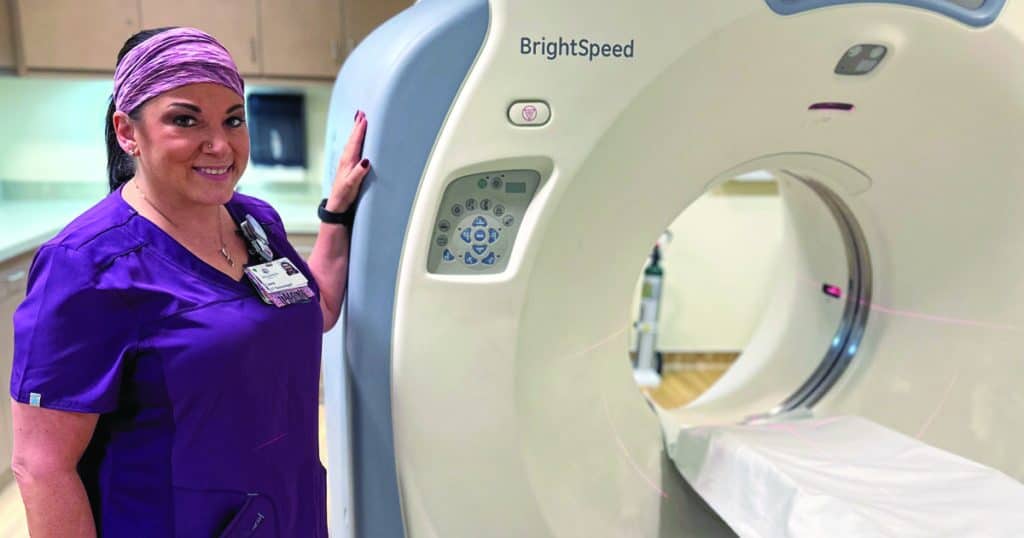Money-Smart Eating: A Recipe for Financial and Nutritional Wellness
Published: January 4, 2024
Originally published in Williamson County Living —
It’s a new year, and the holidays are behind us. So if you’re ready to get back on track with your finances and your health, planning is key.
Making a plan ahead of time keeps us from overspending, saving us both dollars and calories. Following these simple steps will help you “plan your eats and eat your plan,” making it easier to enjoy healthy meals without breaking your budget.
- Avoid shopping on an empty stomach. One of the cardinal rules of budget-friendly and healthy eating is to never shop on an empty stomach. Eat a healthy meal or snack before you go shopping or head out to run errands. This will ensure your stomach isn’t doing the decision-making. You will save money and calories, and avoid adding unhealthy impulse buys to your basket.
- Stick to a weekly meal plan. Taking a few extra minutes each week to craft a meal plan can have a big impact on your budget and your nutrition. Organize meals with similar ingredients to minimize food waste and protect your hard-earned money. Watch weekly grocery sales and create your menus with these sales in mind. If you don’t use all of the produce you purchased, wash and freeze it to save. This unused produce can be used later in soups, smoothies, chili or stir-fry.
- Fresh, frozen, or canned? There are options to meet various planning and budget needs when purchasing some foods.
- Fresh produce: Fresh produce can be more costly if you’re choosing out-of-season items. Choose items that are in season and locally sourced. Produce routinely travels thousands of miles from farm to table, losing nutrients and flavor before being delivered to grocery stores. Growing herbs or vegetables can save money and get the family involved with food prep. Shopping at a local farmers market is a great option, too.
- Frozen fruits and veggies: Frozen foods tend to be more budget-friendly and will keep longer. Frozen produce is typically picked at the peak of ripeness, then flash frozen. Sometimes, frozen produce can contain more nutrients than fresh produce. Make sure to get frozen foods with no added seasonings or sauces.
- Canned foods: While canned foods are often more affordable, monitor sodium and sugar content, which are often used as preservatives to keep these items shelf stable. Opt for products that are packed in their own juices or labeled “reduced sodium” or “no added salt.”
- Buy and prepare in bulk. Buying in bulk saves money, but also saves precious time. Preparing larger quantities of your favorite healthy recipes allows for leftovers or meals that can be frozen and enjoyed later. Designate a day each week to batch-cook several meals, creating a convenient and economical approach to healthy eating. It can also be helpful to buy meat in bulk, cook it and freeze it in one-pound portions for later use. Big packs of chicken can be boiled, then shredded to be used later in tacos, chicken salad, soups and as a salad topping. Browned lean ground beef is great for spaghetti, tacos, chili and salads. Cheaper cuts of red meat can be tougher when cooked so these are better cooked low and slow for use in stews and soups. Don’t have room in your freezer? Buy the meat in bulk and split the cost and meat with a family member or neighbor.
- Bring your lunch to work. Rather than going out for lunch or grabbing fast food, take leftovers from the night before. This helps you stick to your budget and your health goals. Set aside a day or afternoon to cook, then use single-serve containers and portion out your lunches for the week. Soups, chili and sheet pan meals (a protein and vegetables cooked together on a sheet pan) are great options for healthy make-ahead lunches.
- Observe Meatless Mondays. Plant-based proteins can be more affordable (think dried beans and grains). Rather than a meat-and-three dinner, try beans and brown rice with a side salad or a quinoa bowl with roasted vegetables.
- Eating out with intention. When you want to enjoy a meal at a restaurant, planning ahead can be crucial for both your wallet and your health goals. When you’re eating out, try a few of these options:
- Do your research. Visit the restaurant’s website and consult the menu before you get there. This helps you plan what to order before you even arrive. Many restaurants also include nutritional information about their menu items on their websites, so you can make an informed, healthy choice.
- Eat only half of your entree. Most restaurant meals are enough for two, so order the meal and split with a partner or box up half for the next lunch or dinner. If you’re planning to eat half of your entree at a later time, ask for a box and portion out your meal before you take your first bite. This should help you from eating more than you intended.
- Choose smaller portions. There are plenty of ways to downsize your portions in a restaurant. Try ordering an appetizer with a side salad or picking a couple of items from the sides category to have as your meal. If the restaurant allows it, consider ordering from the kids’ menu to save money and calories.
- Go with water. Stick to water instead of sugary beverages like soda or sweetened tea to save both calories and costs.
Eating healthy is possible on a budget, and these simple tips should help you get back on track for a healthy start to the new year.
Lisa Mathews is a registered dietitian and nutritionist, certified diabetes educator and personal trainer. She is Williamson Health’s clinical nutrition manager. To learn more about Lisa, Williamson Health and the wide range of services the healthcare system provides, visit WilliamsonHealth.org.
Money-Smart Eating: A Recipe for Financial and Nutritional Wellness
Originally published in Williamson County Living —
It’s a new year, and the holidays are behind us. So if you’re ready to get back on track with your finances and your health, planning is key.
Making a plan ahead of time keeps us from overspending, saving us both dollars and calories. Following these simple steps will help you “plan your eats and eat your plan,” making it easier to enjoy healthy meals without breaking your budget.
- Avoid shopping on an empty stomach. One of the cardinal rules of budget-friendly and healthy eating is to never shop on an empty stomach. Eat a healthy meal or snack before you go shopping or head out to run errands. This will ensure your stomach isn’t doing the decision-making. You will save money and calories, and avoid adding unhealthy impulse buys to your basket.
- Stick to a weekly meal plan. Taking a few extra minutes each week to craft a meal plan can have a big impact on your budget and your nutrition. Organize meals with similar ingredients to minimize food waste and protect your hard-earned money. Watch weekly grocery sales and create your menus with these sales in mind. If you don’t use all of the produce you purchased, wash and freeze it to save. This unused produce can be used later in soups, smoothies, chili or stir-fry.
- Fresh, frozen, or canned? There are options to meet various planning and budget needs when purchasing some foods.
- Fresh produce: Fresh produce can be more costly if you’re choosing out-of-season items. Choose items that are in season and locally sourced. Produce routinely travels thousands of miles from farm to table, losing nutrients and flavor before being delivered to grocery stores. Growing herbs or vegetables can save money and get the family involved with food prep. Shopping at a local farmers market is a great option, too.
- Frozen fruits and veggies: Frozen foods tend to be more budget-friendly and will keep longer. Frozen produce is typically picked at the peak of ripeness, then flash frozen. Sometimes, frozen produce can contain more nutrients than fresh produce. Make sure to get frozen foods with no added seasonings or sauces.
- Canned foods: While canned foods are often more affordable, monitor sodium and sugar content, which are often used as preservatives to keep these items shelf stable. Opt for products that are packed in their own juices or labeled “reduced sodium” or “no added salt.”
- Buy and prepare in bulk. Buying in bulk saves money, but also saves precious time. Preparing larger quantities of your favorite healthy recipes allows for leftovers or meals that can be frozen and enjoyed later. Designate a day each week to batch-cook several meals, creating a convenient and economical approach to healthy eating. It can also be helpful to buy meat in bulk, cook it and freeze it in one-pound portions for later use. Big packs of chicken can be boiled, then shredded to be used later in tacos, chicken salad, soups and as a salad topping. Browned lean ground beef is great for spaghetti, tacos, chili and salads. Cheaper cuts of red meat can be tougher when cooked so these are better cooked low and slow for use in stews and soups. Don’t have room in your freezer? Buy the meat in bulk and split the cost and meat with a family member or neighbor.
- Bring your lunch to work. Rather than going out for lunch or grabbing fast food, take leftovers from the night before. This helps you stick to your budget and your health goals. Set aside a day or afternoon to cook, then use single-serve containers and portion out your lunches for the week. Soups, chili and sheet pan meals (a protein and vegetables cooked together on a sheet pan) are great options for healthy make-ahead lunches.
- Observe Meatless Mondays. Plant-based proteins can be more affordable (think dried beans and grains). Rather than a meat-and-three dinner, try beans and brown rice with a side salad or a quinoa bowl with roasted vegetables.
- Eating out with intention. When you want to enjoy a meal at a restaurant, planning ahead can be crucial for both your wallet and your health goals. When you’re eating out, try a few of these options:
- Do your research. Visit the restaurant’s website and consult the menu before you get there. This helps you plan what to order before you even arrive. Many restaurants also include nutritional information about their menu items on their websites, so you can make an informed, healthy choice.
- Eat only half of your entree. Most restaurant meals are enough for two, so order the meal and split with a partner or box up half for the next lunch or dinner. If you’re planning to eat half of your entree at a later time, ask for a box and portion out your meal before you take your first bite. This should help you from eating more than you intended.
- Choose smaller portions. There are plenty of ways to downsize your portions in a restaurant. Try ordering an appetizer with a side salad or picking a couple of items from the sides category to have as your meal. If the restaurant allows it, consider ordering from the kids’ menu to save money and calories.
- Go with water. Stick to water instead of sugary beverages like soda or sweetened tea to save both calories and costs.
Eating healthy is possible on a budget, and these simple tips should help you get back on track for a healthy start to the new year.
Lisa Mathews is a registered dietitian and nutritionist, certified diabetes educator and personal trainer. She is Williamson Health’s clinical nutrition manager. To learn more about Lisa, Williamson Health and the wide range of services the healthcare system provides, visit WilliamsonHealth.org.
Published: January 4, 2024










